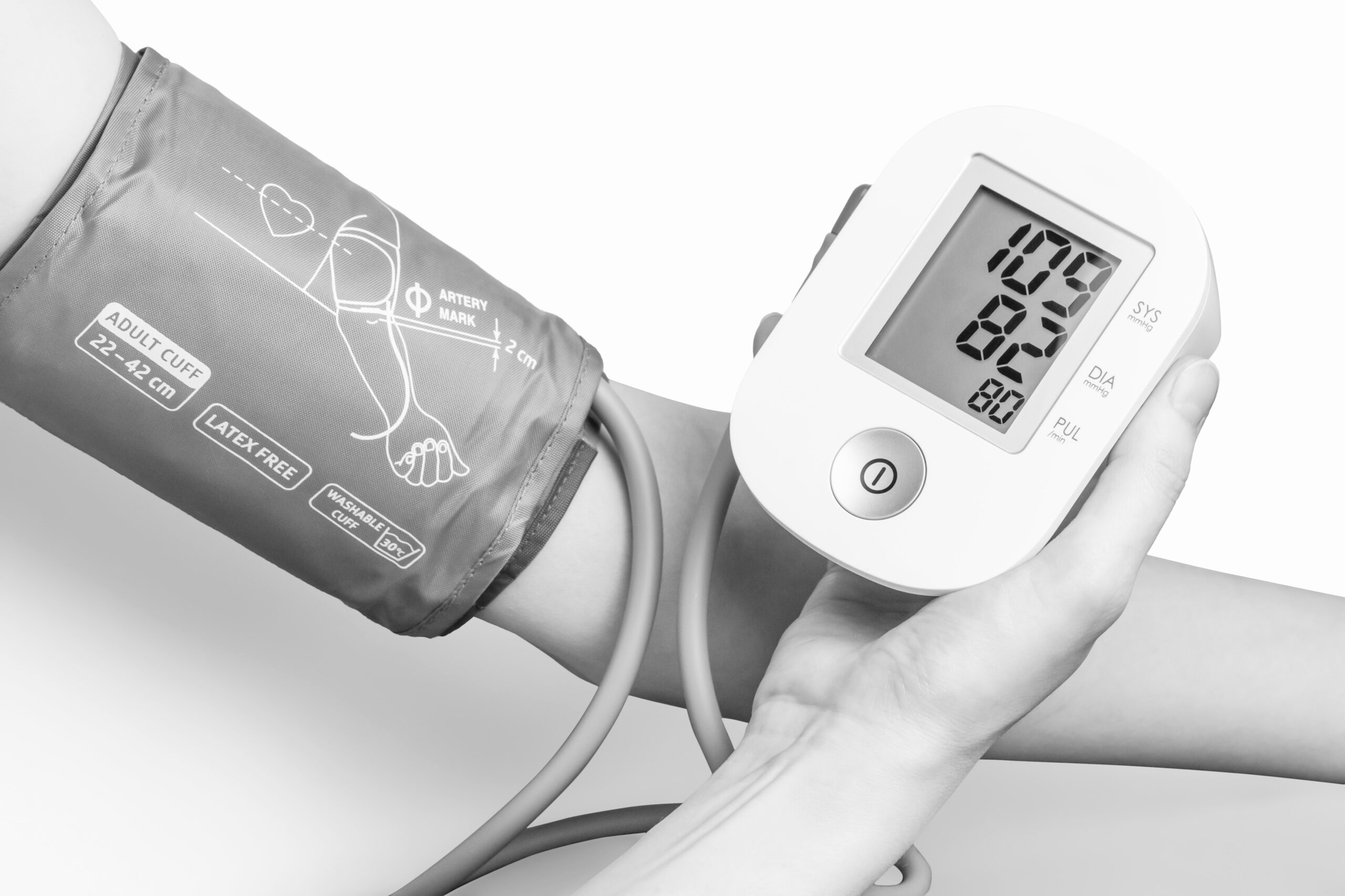When was the last time you had your blood pressure checked? Why should you be concerned about your blood pressure (BP)? High blood pressure is one of the leading preventable causes of early death globally through its detrimental influence on cardiovascular disease (CVD) development.
“Your blood pressure is 121/78mmHg”. What does this mean? The term mmHg” is a standard unit of pressure. The two numbers reviewed are firstly, the systolic blood pressure (SBP; 121 in the example) which reflects the peak pressure exerted on your cardiovascular system by your heart contracting to pump blood around the body. The second number is the diastolic blood pressure (DBP) which is the lowest amount of pressure exerted on your cardiovascular system when the heart is relaxing. Both values describe stress imposed on your cardiovascular system.
So, what is a healthy or normal blood pressure? The lower the better right? Yes, to a certain point. Blood within the vessels will create an outwards pressure on the vessels but even with high intensity exercise, we want the least amount of pressure possible while still accomplishing optimal blood flow to all our tissues. “Normal” blood pressure used to be considered any range between 129/80 mmHg. Unfortunately, this has implied this is the “safe” zone that provides ultimate protection against blood pressure’s influence on CVD. However, the concept of “normal” blood pressure is changing over time based on changes in risk prediction arising from ongoing cardiovascular disease research. A recent 10-year cohort study showed individuals with a baseline systolic blood pressure (SBP) of 120–129 mmHg have a 2.6 times higher risk of CVD compared to the lowest category (90–99 mmHg). This held true when the cohort was adjusted for the risk of “aging” across the 10-year period (Ji et al., 2022). Other papers suggest that there is progressive increase in CVD risk as SBP increases beyond 90 mmHg (Tajeu et al., 2017; Whelton et al., 2020). As quoted by a recent article, “CVD risk appears to be independently associated with SBP levels, starting at 90 mmHg” (Ram et al., 2023). Additionally, there should be a large shift in mindset away from the perception of white-coat hypertension (WCH), which is a high BP only in a clinical setting, as an “innocent phenomenon”. WCH has now been linked to unfavourable metabolic health and a greater risk of progression to high cardiovascular morbidity and mortality (Mancia et al., 2020).
Accumulative scientific evidence now strongly supports improving SBP to meet “optimal” levels below 100-110mmHg rather than achieving “normal” levels to reduce the risk of early death. High quality reduction and maintenance of BP involves the consistent combination of regular physical activity, minimising body fat, following national dietary guidelines, enjoying regular undisturbed sleep, and moderating lifestyle stresses. Additionally, picking your parents can also be helpful, as there is a genetic component to risk of high BP. In BP management, medication can be offered to assist with treatment, as in most contexts, research suggests BP should be managed aggressively, which is safe (Juraschek et al., 2021). This is because high BP has compounding health detriments if left to be slowly reduced (Unger et al., 2020). Seek advice from the clinicians at ACE for further assistance in achieving optimal blood pressure management.
Written by Tom Murphey, DPT.
“Unfortunately for our community, scientific scaremongering is common, easy to believe and hard to heal. Research is often messy, and strong stances or beliefs can be both erroneous and dishonest. I aim to produce honest reviews of some high-quality research to provide informed insight so you can make up your own mind on the science you value.”
References:
Ji C, Wang W, Shi J, Huang Z, Chen S, Wang G, et al. Level of systolic blood pressure within the normal range and the risk of cardiovascular events in the absence of risk factors in Chinese. J Hum Hypertens 2022;36:933–939.
Juraschek SP, Hu JR, Cluett JL, Ishak A, Mita C, Lipsitz LA, Appel LJ, Beckett NS, Coleman RL, Cushman WC, Davis BR, Grandits G, Holman RR, Miller ER 3rd, Peters R, Staessen JA, Taylor AA, Thijs L, Wright JT Jr, Mukamal KJ. Effects of Intensive Blood Pressure Treatment on Orthostatic Hypotension : A Systematic Review and Individual Participant-based Meta-analysis. Ann Intern Med. 2021 Jan;174(1):58-68. doi: 10.7326/M20-4298. Epub 2020 Sep 10. PMID: 32909814; PMCID: PMC7855528.
Mancia G, Facchetti R, Bombelli M, Cuspidi C, Grassi G. White-coat hypertension: pathophysiological and clinical aspects: excellence award for hypertension research 2020. Hypertension 2021;78:1677–1688.
Ram, C. V. S. (2023). ‘Normal’ blood pressure is no longer a safe haven: take shelter under ‘optimal’blood pressure.
Tajeu GS, Booth JN, Colantonio LD, Gottesman RF, Howard G, Lackland DT, et al. Incident cardiovascular disease among adults with blood pressure <140/90 mmHg. Circulation 2017;136:798–812.
Unger, T., Borghi, C., Charchar, F., Khan, N. A., Poulter, N. R., Prabhakaran, D., … & Schutte, A. E. (2020). 2020 International Society of Hypertension global hypertension practice guidelines. Hypertension, 75(6), 1334-1357.
Whelton SP, McEvoy JW, Shaw L, Psaty BM, Lima JA, Budoff M, et al. Association of normal systolic blood pressure level with cardiovascular disease in the absence of risk factors. JAMA Cardiol 2020;5:1011–1018.

Comments:
share